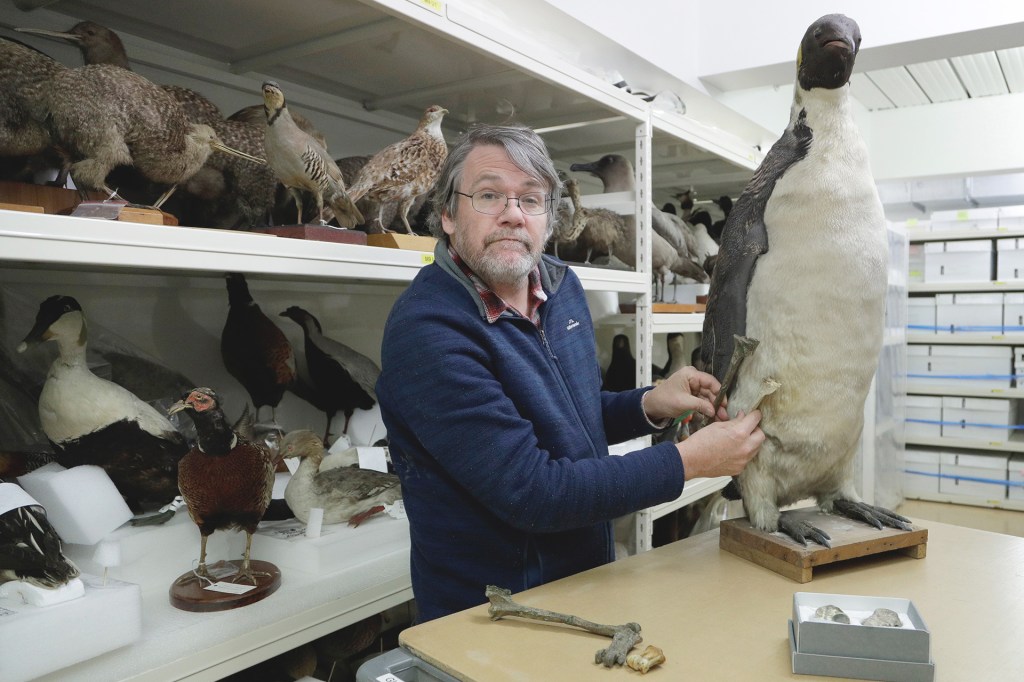
Scientists announced the discovery of an extinct species of giant penguin on Wednesday. The bird’s fossilized bones have been found in New Zealand.
Researchers believe the penguin stood about five feet two inches tall. That’s just a little bit shorter than the average adult woman. The penguin weighed about 176 pounds. The prehistoric bird would have stood a foot taller than and weighed twice as much as an emperor penguin. That’s the largest penguin alive today.
The fossils were discovered by Leigh Love, an amateur fossil collector, in the bed of New Zealand’s Waipara River.
The monster penguin species is named Crossvallia waiparensis. Researchers believe the penguin lived around 60 million years ago, during the Paleocene Epoch.
Paul Scofield is with the Canterbury Museum, in New Zealand. He studied the fossils. Scofield believes that penguins and other birds got bigger during the Paleocene Epoch. That’s because there weren’t many large predators around at the time. “The oceans were ripe for the picking with the lack of mega predators,” Scofield says. In New Zealand, scientists have discovered fossils of other huge birds. One such discovery was the world’s largest parrot.
The Crossvallia waiparensis is similar to a species of giant penguin that was discovered in Antarctica. Scofield says this finding could help prove there was once land connecting New Zealand and Antarctica.














